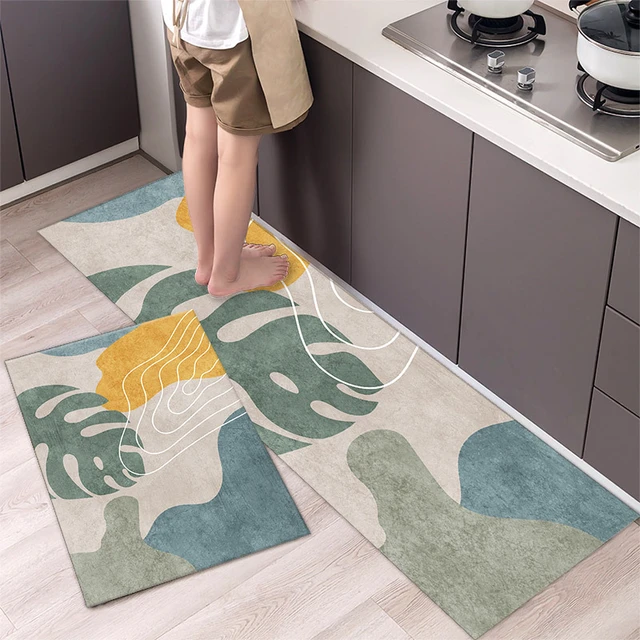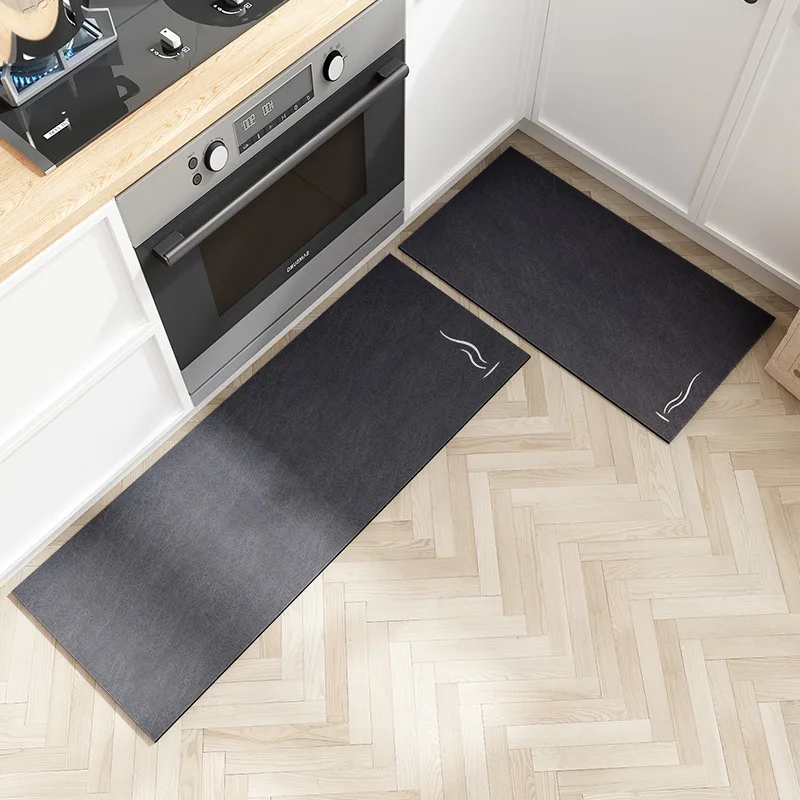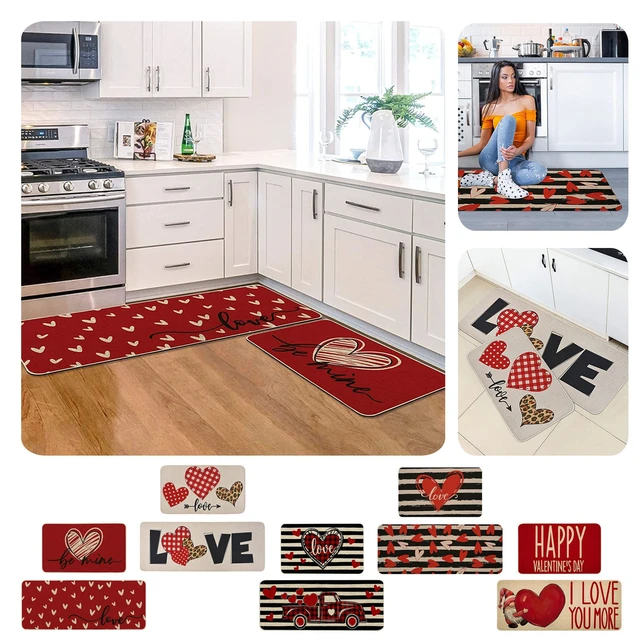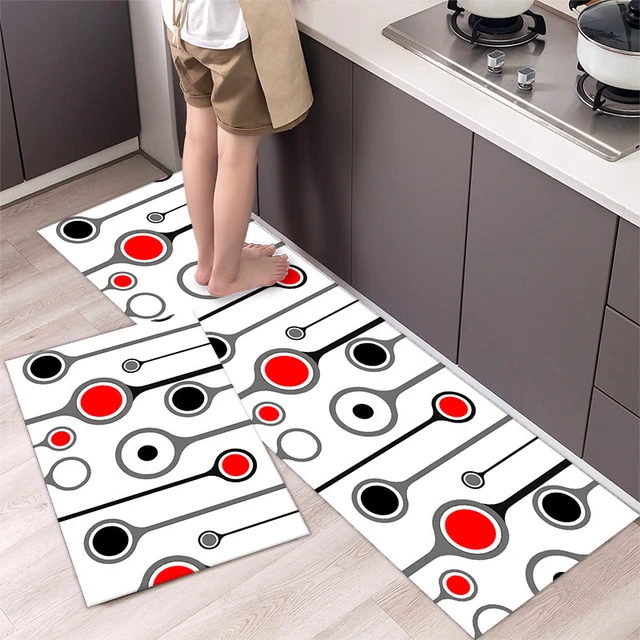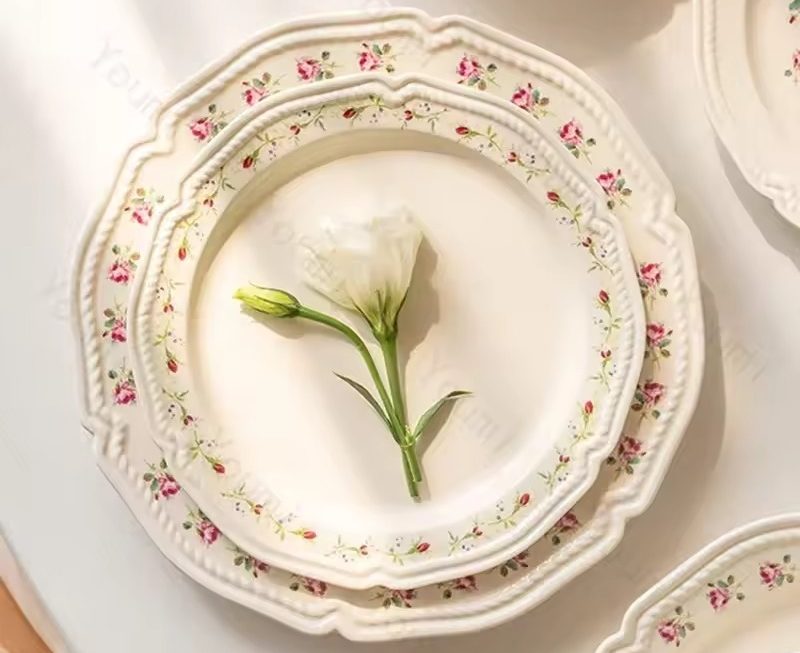Introduction of Kitchen Fatigue Mat:
In the fast-paced environment of a kitchen, standing for long periods can take a toll on your feet, legs, and back. That’s where a kitchen fatigue mat comes in. In this article, we will explore the benefits, features, types, and maintenance of a kitchen fatigue mat, as well as how to choose the right one for your needs.
Benefits of a Kitchen Fatigue Mat:
A kitchen fatigue mat offers numerous benefits to those who spend extended periods standing in the kitchen. It provides cushioning and support to alleviate discomfort and reduce fatigue in the feet, legs, and lower back. It promotes better posture and proper weight distribution, helping to prevent strain, aches, and pains. Additionally, a fatigue mat provides a non-slip surface, enhancing safety in the kitchen by reducing the risk of slips and falls.
Most fatigue mats are designed to be easy to clean and maintain. They can be wiped down or vacuumed to remove dirt, spills, and food particles. Regular cleaning ensures a hygienic kitchen environment.
While kitchen fatigue mats are primarily used in kitchens, they can also be used in other areas of the home, such as laundry rooms, workshops, or standing desks. Their versatility allows you to enjoy the benefits of a fatigue mat in various spaces.
Features of a Kitchen Fatigue Mat:
Kitchen fatigue mats are designed with specific features to enhance comfort and safety. They are typically made from anti-fatigue materials such as foam, gel, or rubber, providing cushioning and shock absorption. The mats have a non-slip backing to prevent any movement during use. Some mats also have beveled edges to minimize tripping hazards and allow easy movement on and off the mat.
Types of Kitchen Fatigue Mats:
There are various types of kitchen fatigue mats to choose from, depending on your preferences and requirements. Foam mats offer soft cushioning and are lightweight and easy to clean. Gel mats provide exceptional comfort and support, molding to the shape of your feet. Rubber mats are durable, water-resistant, and suitable for high-traffic areas. Additionally, there are anti-fatigue mats with decorative designs or personalized options to match your kitchen decor.
Proper Placement and Sizing:
When using a kitchen fatigue mat, proper placement is essential. Ideally, the mat should be placed in areas where you spend the most time standing, such as in front of the sink, stove, or countertop. It should be large enough to accommodate your movements and provide ample support for your entire body. Consider the size and layout of your kitchen when choosing the dimensions of your fatigue mat.
Maintenance and Care:
To keep your kitchen fatigue mat in optimal condition, regular maintenance is necessary. Most mats can be easily cleaned with mild soap and water. It’s important to follow the manufacturer’s instructions for cleaning and drying to ensure longevity. Additionally, inspect the mat regularly for any signs of wear or damage, and replace it if necessary to maintain its effectiveness.
Choosing the Right Kitchen Fatigue Mat:
When selecting a kitchen fatigue mat, consider your specific needs and preferences. Assess the level of cushioning and support required, the size and layout of your kitchen, and the material and features that best suit your preferences. Read reviews and compare different options to make an informed choice.
How to Choose a Kitchen Fatigue Mat?
When selecting a kitchen fatigue mat, it’s important to consider factors that will provide the most comfort and support for your specific needs. Here are some key points to consider when choosing a kitchen fatigue mat:
Thickness and Cushioning:
Look for a mat with sufficient thickness and cushioning to provide comfort and support while standing. Thicker mats generally offer more cushioning and shock absorption, reducing fatigue and discomfort in your feet, legs, and back.
Material and Durability:
Consider the material of the fatigue mat. Common materials include foam, gel, and rubber. Foam mats are lightweight and easy to clean. Gel mats provide excellent cushioning and contour to your feet. Rubber mats are durable and resistant to water and spills. Choose a material that suits your preferences and is resistant to wear and tear.
Size and Shape:
Select a kitchen fatigue mat that fits the size and layout of your kitchen. Measure the area where you will be standing the most and choose a mat that provides ample coverage. Additionally, consider the shape of the mat. Rectangular or square mats are common, but there are also runner-style mats available for longer work areas.
Non-Slip Feature:
Ensure that the fatigue mat has a non-slip backing or surface to prevent any accidental slips or falls. This feature is especially important in a kitchen where spills and moisture are common.
Beveled Edges:
Consider a mat with beveled edges, as they minimize tripping hazards and allow for easy movement on and off the mat. Beveled edges also provide a smooth transition between the mat and the floor.
Style and Design:
While functionality is essential, you can also choose a fatigue mat that complements your kitchen decor. There are various designs and colors available, allowing you to find a mat that matches your style and adds a touch of aesthetic appeal to your kitchen.
Reviews and Recommendations:
Read customer reviews and seek recommendations from others who have purchased and used kitchen fatigue mats. Their experiences can offer valuable insights into the quality, comfort, and durability of different mats.
Budget:
Consider your budget when selecting a kitchen fatigue mat. While higher-priced mats may offer superior quality and durability, there are also budget-friendly options available that provide adequate comfort and support.
By considering these factors, you can choose a kitchen fatigue mat that meets your specific needs and enhances your overall comfort and safety while working in the kitchen. A well-chosen fatigue mat will help reduce fatigue, alleviate discomfort, and make your time in the kitchen more enjoyable.
Conclusion:
A kitchen fatigue mat is an essential addition to any kitchen, providing comfort, support, and safety to those who spend time standing and working in this space. With its cushioning properties, non-slip surface, and ergonomic design, a fatigue mat helps alleviate fatigue, reduce discomfort, and prevent injuries. By choosing the right kitchen fatigue mat and properly maintaining it, you can enhance your kitchen experience and create a more comfortable and enjoyable environment for cooking and meal preparation.
